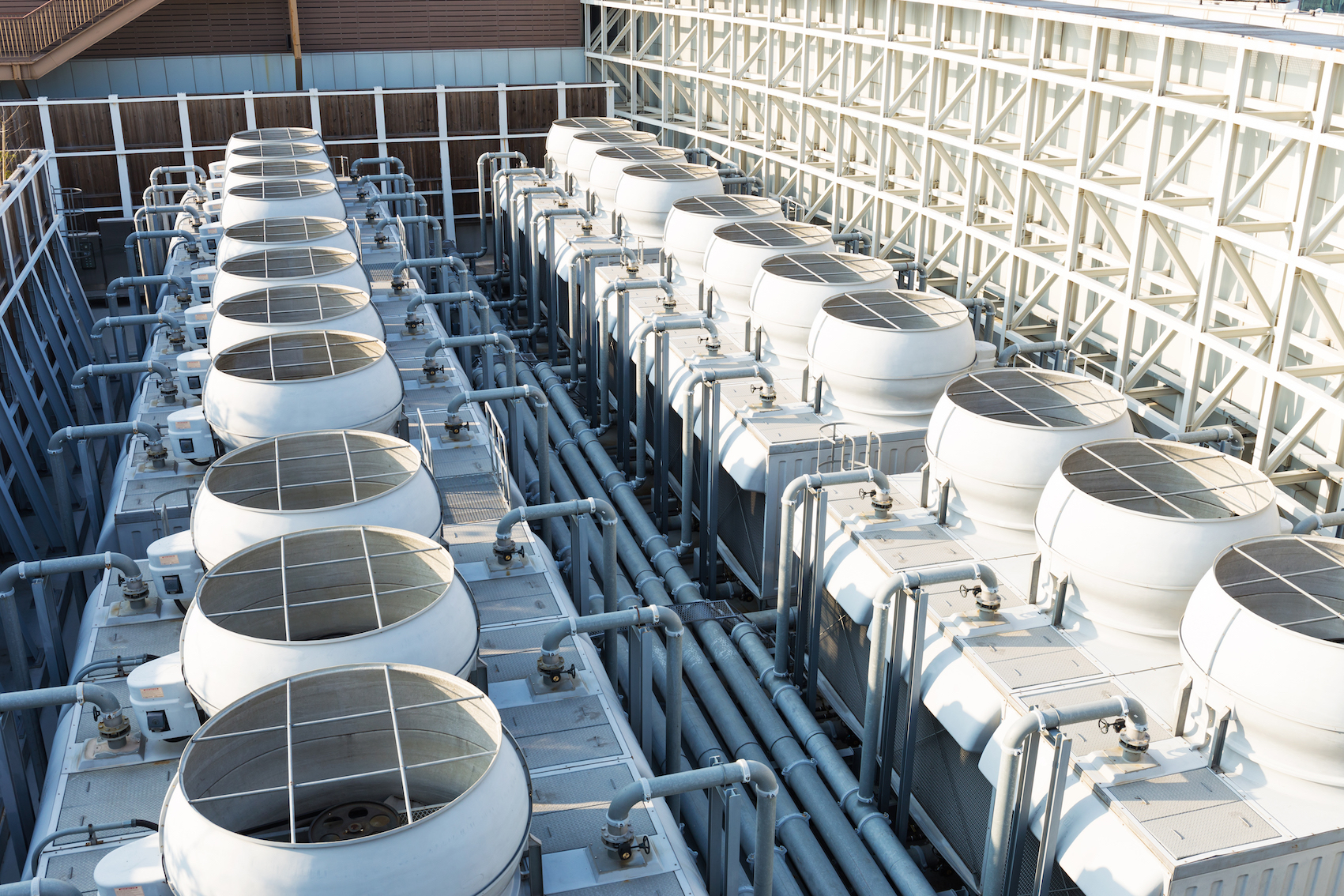In the world of large-scale facility management, the hum of chiller plants has become a constant soundtrack. These systems play a crucial role in maintaining comfortable indoor environments, regulating temperatures, and preserving sensitive equipment.
However, in recent years, a noticeable trend has emerged: chiller plants in large facilities are running longer than ever before. Let’s look at what’s driving this change and what implications it has for facility owners and operators.
Rise of Chiller Plants
Chiller plants are central to the cooling infrastructure of large facilities such as hospitals, data centers, manufacturing plants, and commercial buildings. They use refrigeration cycles to remove heat from the air or water, maintaining optimal temperatures within the facility.
According to a report by Grand View Research, the global chiller market size was valued at US $9.4 billion in 2020 and is expected to expand at a compound annual growth rate (CAGR) of 4.3% from 2021 to 2028. This substantial growth indicates the increasing reliance on chiller plants across various sectors worldwide.
But what is driving the surge in chiller plant operations?
Increased Demand for Indoor Comfort: With a growing emphasis on occupant comfort and productivity, facility managers are striving to maintain consistent temperatures throughout their buildings. This heightened demand for indoor comfort leads to chiller plants operating for more extended periods to meet cooling requirements, especially in regions experiencing rising temperatures due to climate change.
Expansion of Critical Infrastructure: The proliferation of data centers, healthcare facilities, and industrial complexes has led to an expansion in critical infrastructure. These facilities often house heat-generating equipment and require precise environmental conditions to ensure optimal operation. Consequently, chiller plants must work overtime to regulate temperatures and prevent overheating, contributing to longer running times.
Aging Infrastructure: Many chiller plants in large facilities are part of aging infrastructure that may not be as energy efficient as newer systems. New chiller plants can often require millions of dollars to build, so it’s no surprise that many facility operators are not able to make that investment. Aging equipment often requires more frequent maintenance and experiences performance degradation over time, leading to longer operating hours to compensate for inefficiencies.
Energy Efficiency Measures: Paradoxically, efforts to improve energy efficiency can also result in longer chiller plant operation. While energy-efficient buildings and equipment reduce overall energy consumption, they may rely on centralized cooling systems like chiller plants to maintain efficiency. As a result, these plants run longer but at lower capacities.
Implications
The prolonged operation of chiller plants carries significant implications for facility managers, energy managers and sustainability managers.
Extended operation puts additional strain on chiller plant components, increasing the risk of wear and tear. That means facility managers must prioritize proactive maintenance to prevent unexpected breakdowns and ensure uninterrupted cooling operations.
Longer chiller plant operation also translates to higher energy consumption and increased utility costs for facility owners. Implementing energy management strategies, such as optimizing chiller plant efficiency, integrating renewable energy sources, and implementing demand response programs, can help mitigate these impacts and reduce operational expenses.
And of course, higher energy consumption by chiller plants contributes to increased greenhouse gas emissions and environmental degradation. That is proving increasingly problematic in the face of new regulations like New York City’s Local Law 97 that financially penalize building owners for exceeding their emission limits.
Addressing the Challenge
Higher energy costs, emissions penalties, and sustainability commitments are leading many building owners and operators to find new ways to boost the performance of chiller plants.
But it’s not easy.
Most control systems do a good job at maintaining a consistent temperature but that comes with higher energy costs and consumption. They are simply not built to optimize plant performance. Some people have tried to address the problem with software, but it failed to address the inevitable “drift” of chiller plant equipment – the way performance changes as equipment ages and degrades.
At SHIFT Energy, we’ve spent a lot of energy working on this problem. We’ll be rolling out our chiller plant solution later this year that will cut energy consumption while boosting plant performance. If you want to get a head start on cutting energy consumption and carbon emissions while enhancing plant stability, drop us a note and get a sneak peek of this innovative new solution.

